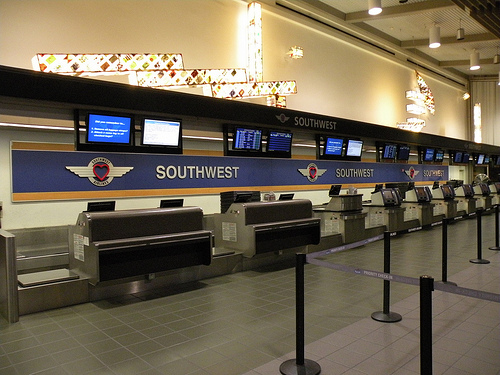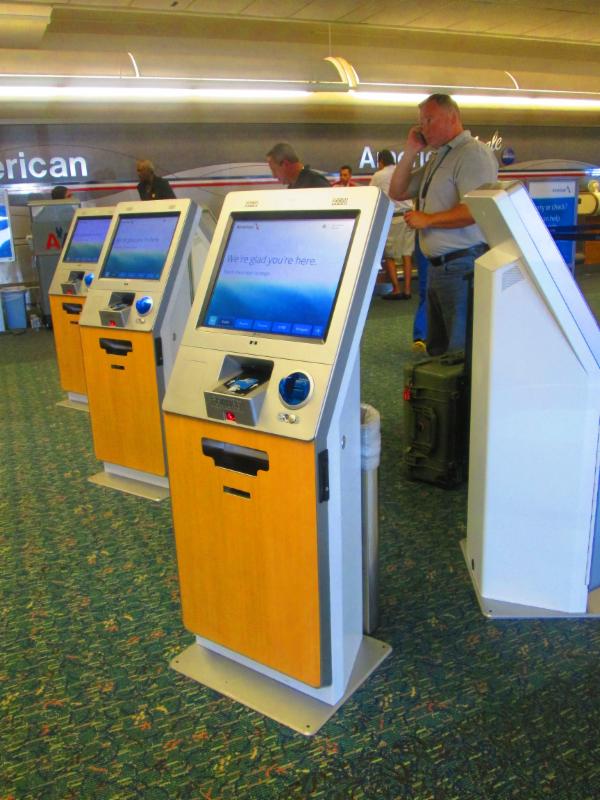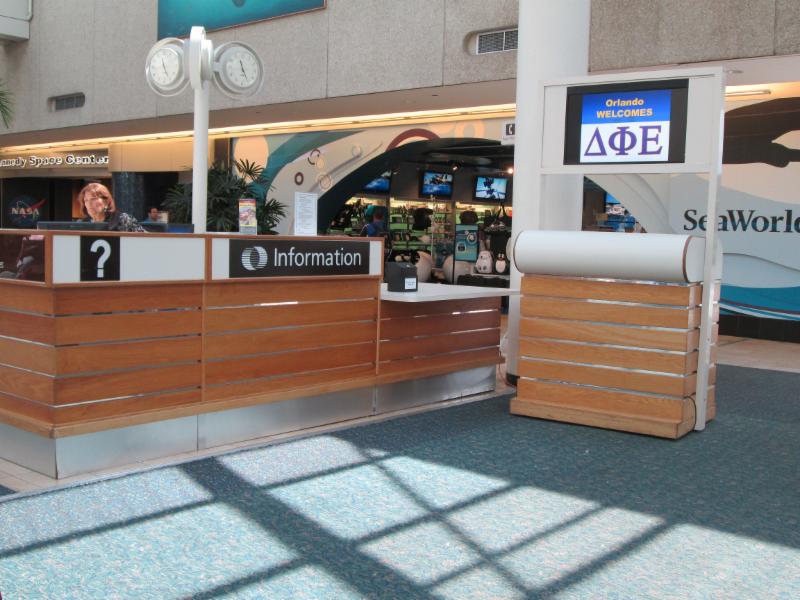|
Ticket counters and information desks outside the secured area fall under the ADA section 904 and possibly 902 since they are a public accommodation. Section 904 discusses service and sales counters. If the ticket counters are used for selling tickets or to provide some type of service, such as information, getting boarding passes, or checking in bags, those counters will require that a portion of the public side of the counter be no higher than 36" a.f.f., and no shorter than 36" in length. A parallel or forward approach is allowed.

This ticket counter does not have a portion at 36" a.f.f. , although the area where the baggage is turned in is open and lower. It could be argued that the entire counter is part of the work area for the ticket agent, but in reality it is also where a customer approaches the ticket counter to receive their boarding pass or baggage claim stubs. This is not a compliant service counter.

This ticket counter has a shallow counter that is at 36" a.f.f. which was allowed by the 1991 ADAAG and it is a safe harbor, but a person with disabilities will have difficulty communicating with the ticket agent since the ticket counter is higher than 36" a.f.f.
More and more you find that self service check in are being offered. A passenger will not approach a ticket counter but a self service kiosk. These should be within reach range per section 308 of the ADA. There are other requirements that these might need for people that are visually impaired.

Self-service kiosk systems clearly fall within the ACAA encompassing language, which incorporates the Americans with Disabilities Act (ADA) Title III standard for accessible design. This means that these kiosks should meet the reach ranges specified by the ADA but in addition it should have similar privacy requirements as the ATMs do. The kiosks should have the ability to communicate with the visually impaired as well s the hearing impaired patrons. This is not yet happening, but the industry is aware of the deficiency and will hopefully act on that in the near future.

In the same area as the ticket counter there might be counters for filling out baggage tags. These would fall under the ADA Section 902. 5% of the counters must be accessible and have a forward approach. They should be no higher than 34" a.f.f and they should have a knee space complying with ADA section 306

Other areas of the airport might have information counters. Those will fall under the service counters of ADA Section 904. They should also have a portion at 36" a.f.f. so that a passenger can communicate with the person behind the counter. According to 904.4 the accessible portion of the counter top shall extend the same depth as the sales or service counter top. Therefore a separate counter attached to the front of the service counter may not be used.

Car rental counters are also considered a service counter and are required to be accessible and follow ADA Standards section 904

|